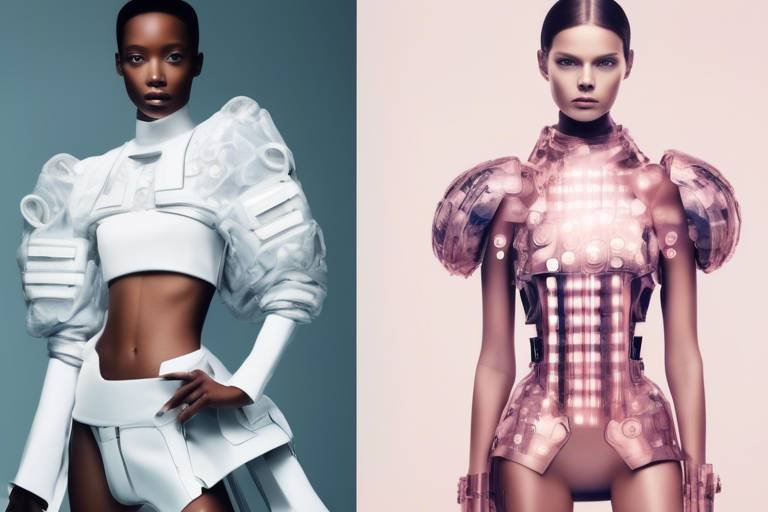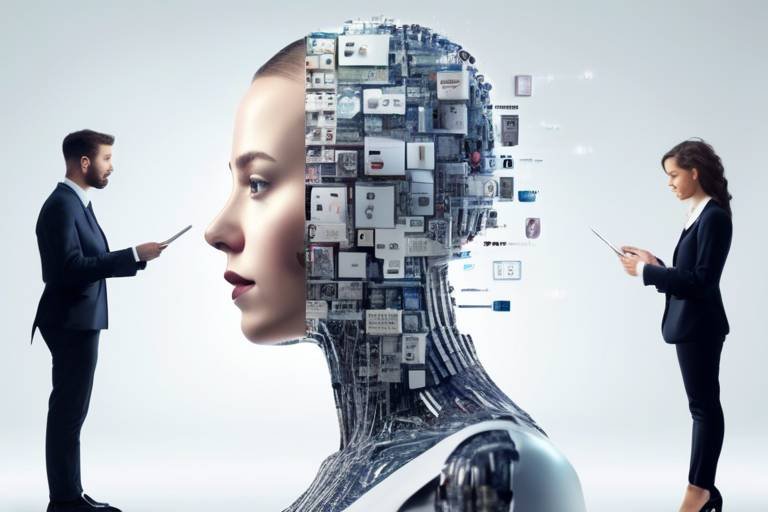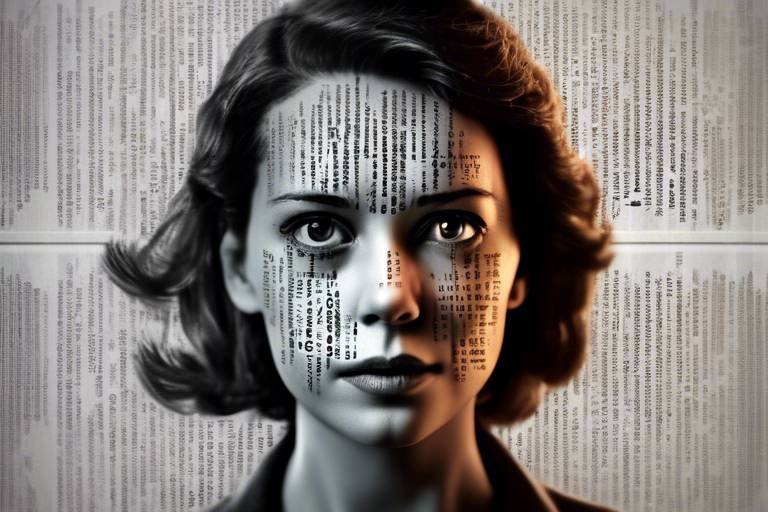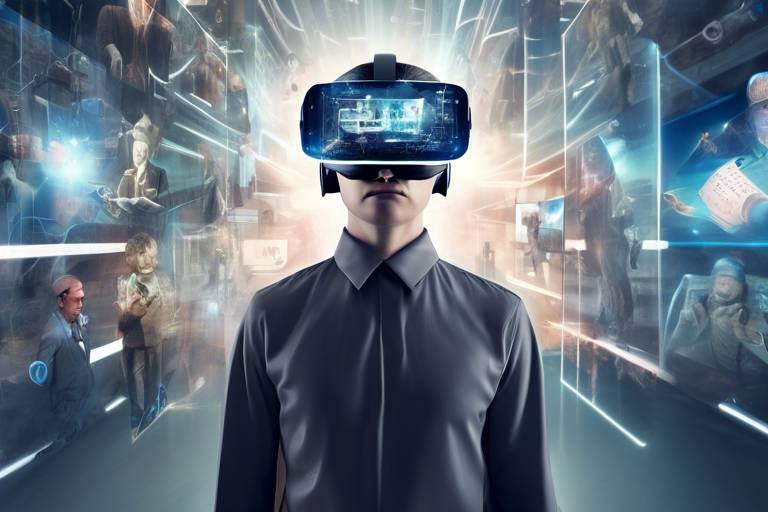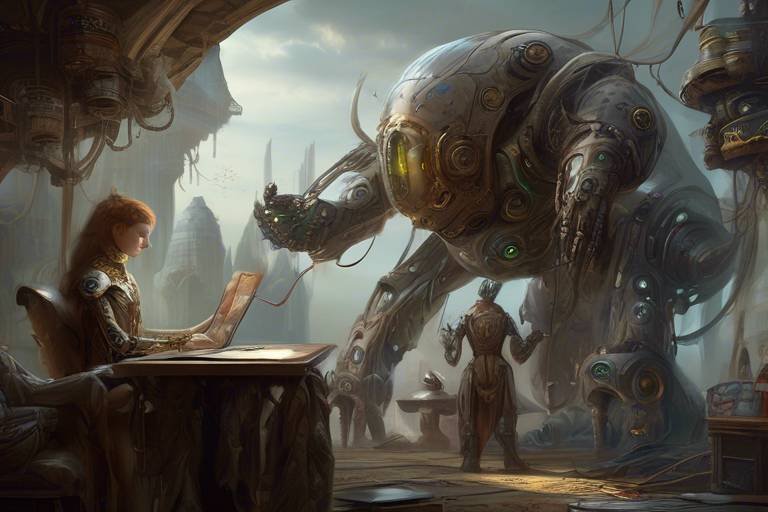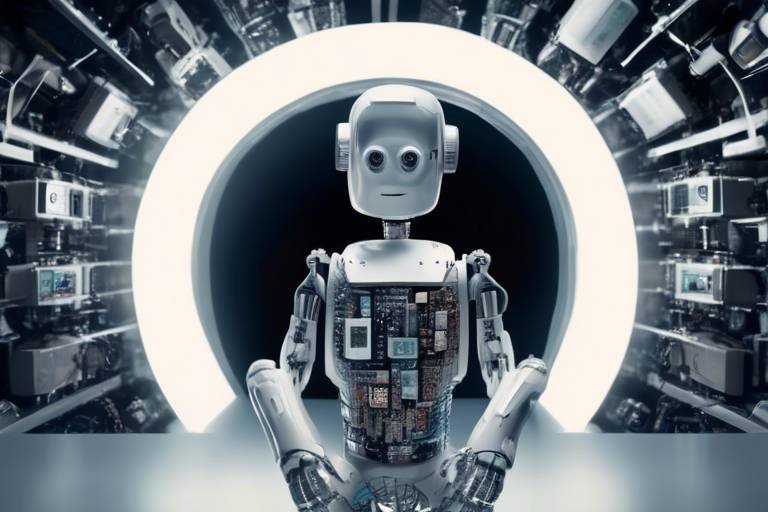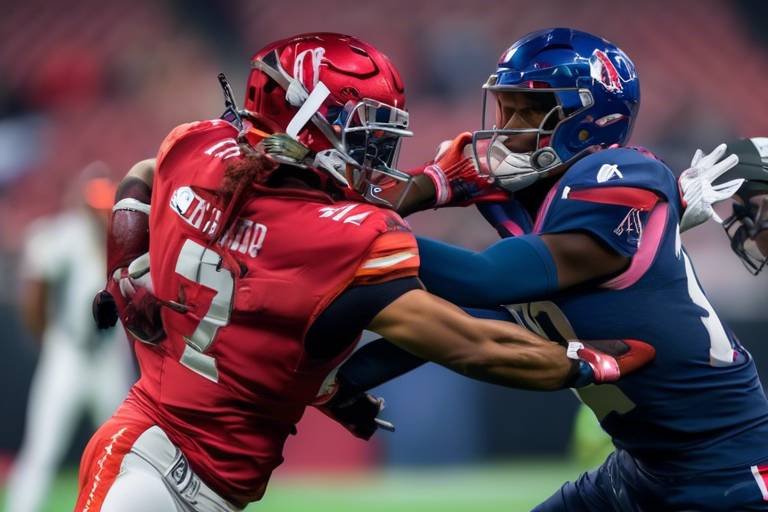The Rise of AI in Fashion Modeling
The fashion industry is undergoing a seismic shift, and at the heart of this transformation is artificial intelligence (AI). This technology is not just a buzzword; it's a game-changer that is redefining how we perceive and engage with fashion modeling. Imagine a world where fashion brands can create stunning visuals without the constraints of traditional modeling. That's the reality we're stepping into, thanks to AI. From virtual models that can strut down the digital runway to personalized shopping experiences that cater to individual tastes, AI is reshaping the fabric of fashion. But how exactly is this happening? What are the implications for models, brands, and consumers alike? Let’s dive into the intricate layers of this fascinating evolution.
Virtual models powered by AI are revolutionizing fashion advertising, allowing brands to create diverse and customizable representations without the limitations of physical models. These digital avatars can be designed to embody a wide range of body types, ethnicities, and styles, effectively breaking down the barriers of traditional beauty standards. Imagine a campaign where the model can change outfits, poses, and even skin tones at the click of a button. This flexibility not only saves time and resources but also opens the door to a more inclusive representation of beauty in fashion. Brands can now showcase their products on models that resonate with a broader audience, making their marketing strategies more effective and relatable.
AI technology enables brands to analyze consumer data, leading to personalized shopping experiences that cater to individual preferences and enhance customer satisfaction. By leveraging data-driven insights, companies can create tailored marketing campaigns that speak directly to their target audience. For instance, if a shopper frequently buys casual wear, AI can suggest similar styles or even predict future purchases based on their browsing history. This level of personalization not only increases sales but also fosters a deeper connection between the brand and the consumer.
Through AI analytics, brands gain valuable insights into consumer behavior, helping them tailor their marketing strategies and product offerings effectively. By analyzing patterns in purchasing behavior, companies can identify which items are trending and adjust their inventory accordingly. This proactive approach minimizes overproduction and waste, aligning with the growing demand for sustainability in fashion. Here’s how data-driven insights can impact the industry:
| Data Insight | Impact on Fashion Brands |
|---|---|
| Consumer Preferences | Tailored product offerings |
| Trend Analysis | Informed design decisions |
| Sales Patterns | Optimized inventory management |
Understanding patterns in consumer choices allows brands to predict trends and adjust their collections accordingly, ensuring relevance in a fast-paced industry. With AI, brands can analyze vast amounts of data to uncover insights that were previously hidden. This capability enables them to not only react to trends but also to anticipate them, giving them a competitive edge. For instance, if a particular style is gaining traction on social media, brands can quickly pivot their designs to capitalize on that momentum.
AI algorithms can analyze vast amounts of data to forecast fashion trends, enabling designers to stay ahead of the curve and meet market demands. By examining everything from social media activity to sales data, AI can identify emerging trends before they become mainstream. This predictive capability allows fashion houses to launch collections that resonate with consumers, minimizing the risk of missed opportunities. In a world where trends can change overnight, having the foresight provided by AI is invaluable.
AI tools assist designers in generating innovative concepts and streamlining the design process, allowing for more creativity and efficiency in fashion collections. Imagine a designer collaborating with an AI that can suggest color palettes, fabric combinations, and even design patterns. This partnership can lead to groundbreaking collections that push the boundaries of creativity. By automating repetitive tasks, AI frees up designers to focus on what they do best: creating stunning fashion that captivates audiences.
The rise of AI in fashion modeling raises ethical concerns, including issues of representation, authenticity, and the potential displacement of human models in the industry. As we embrace this technological advancement, it's crucial to consider its implications on society and the workforce.
AI must be programmed to ensure diverse representation, avoiding biases that could perpetuate stereotypes and limit the inclusivity of fashion modeling. If not carefully managed, AI can inadvertently reinforce existing biases, which is the last thing the fashion industry needs as it strives for greater inclusivity. Brands must take responsibility for the data they use to train AI systems, ensuring that they promote a wide range of identities and experiences.
As AI takes on more roles in modeling, there are concerns about job security for human models, prompting discussions on the future of work in the fashion industry. While AI can enhance efficiency and creativity, it also poses challenges for those whose livelihoods depend on traditional modeling. The industry must find a balance between embracing innovation and supporting the human talent that brings fashion to life.
- How is AI changing the fashion industry? AI is revolutionizing the fashion industry by introducing virtual models, enhancing personalization, and providing data-driven insights.
- What are the benefits of using AI in fashion modeling? The benefits include increased efficiency, cost savings, and the ability to cater to a diverse audience.
- Are there ethical concerns with AI in fashion? Yes, issues of representation, authenticity, and job displacement are significant concerns that need to be addressed.

AI-Driven Virtual Models
The fashion industry is undergoing a significant transformation, and at the forefront of this evolution are . These digital avatars are not just a passing trend; they are reshaping how brands approach fashion advertising and marketing. Imagine a world where clothing is showcased by models who can be customized to fit any brand's vision, without the constraints of physical limitations. This is the reality that AI is bringing to the table.
AI-driven virtual models allow brands to create an array of representations that cater to diverse audiences. For instance, a single virtual model can be altered in terms of skin tone, body shape, and even hair texture, providing a level of diversity that traditional modeling often struggles to achieve. This flexibility means brands can resonate with a broader demographic, ensuring that everyone feels represented in the fashion narrative.
Moreover, the use of virtual models significantly reduces production costs. Traditional photo shoots can be time-consuming and expensive, involving logistics such as location scouting, hiring human models, and coordinating schedules. In contrast, virtual models can be created and manipulated digitally, allowing brands to produce high-quality visual content at a fraction of the cost and time. This efficiency not only streamlines the creative process but also opens up opportunities for smaller brands to compete in a crowded marketplace.
One of the most exciting aspects of AI-driven virtual models is their ability to engage with consumers in real-time. Brands can utilize these models in interactive campaigns, allowing potential customers to see how clothing would look on different body types or styles. This level of interactivity enhances the shopping experience, making it more personalized and enjoyable. Imagine trying on outfits virtually, with a model that looks just like you, all from the comfort of your home!
However, the rise of virtual models does not come without its challenges. As brands embrace this technology, they must also navigate the complexities of consumer perception. Will shoppers feel a connection to a digital avatar in the same way they do with a human model? This question looms large as the industry moves forward. It's essential for brands to strike a balance between innovation and authenticity, ensuring that while they leverage technology, they do not lose the human touch that is so vital in fashion.
In summary, AI-driven virtual models are not just a technological advancement; they represent a shift in how fashion is perceived and marketed. They offer unparalleled flexibility, diversity, and efficiency, paving the way for a more inclusive and engaging fashion landscape. As we look to the future, it will be fascinating to see how brands continue to innovate with these digital models, pushing the boundaries of creativity while addressing the ethical considerations that accompany such advancements.

Enhancing Personalization
In today's fast-paced digital world, personalization is no longer just a luxury; it's a necessity. With the rise of AI technology, fashion brands are harnessing the power of data to create tailored shopping experiences that resonate with individual consumers. Imagine walking into a store where every item feels curated just for you—this is the magic of AI-driven personalization. By analyzing consumer data, brands can delve deep into the preferences and behaviors of their customers, allowing them to craft experiences that feel personal and relevant.
Through sophisticated algorithms, AI can sift through mountains of data, identifying patterns that would take humans ages to uncover. For instance, AI can track what styles are trending among different demographics, which colors are flying off the shelves, and even how seasonal changes influence buying habits. This data-driven approach not only enhances customer satisfaction but also boosts brand loyalty, as consumers are more likely to return to a brand that understands their unique tastes.
To illustrate how this works, consider the following key areas where AI enhances personalization:
- Targeted Marketing: By analyzing past purchase behaviors and browsing history, AI can help brands send personalized recommendations and promotions directly to consumers. This means less time scrolling through irrelevant products and more time discovering items that truly match their style.
- Customized Shopping Experiences: AI can create virtual fitting rooms that allow customers to visualize how clothes will look on them, based on their body type and size, making the shopping experience more engaging and satisfying.
- Dynamic Pricing: AI can adjust prices based on consumer behavior, ensuring that loyal customers receive the best deals and incentives, while also maximizing sales opportunities.
Moreover, the integration of AI in fashion personalization extends beyond just clothing. It encompasses accessories, footwear, and even beauty products. Brands can analyze what products are frequently purchased together and suggest complete looks to customers, enhancing their shopping experience and increasing average order values.
However, while the benefits of AI-driven personalization are immense, they come with their own set of challenges. Brands must navigate the delicate balance of utilizing data without infringing on consumer privacy. As consumers become more aware of how their data is used, transparency and ethical data practices will be crucial in maintaining trust.
In conclusion, AI is not just changing the face of fashion; it's enhancing the very fabric of how consumers interact with brands. By leveraging data to create personalized experiences, fashion companies can foster deeper connections with their customers, ensuring they remain competitive in an ever-evolving market.
- How does AI enhance personalization in fashion?
AI analyzes consumer data to tailor shopping experiences, from personalized recommendations to customized marketing strategies. - Are there privacy concerns with AI personalization?
Yes, while AI enhances personalization, brands must be transparent about data usage to maintain consumer trust. - What are some examples of AI in fashion?
Examples include virtual fitting rooms, targeted marketing campaigns, and dynamic pricing models.

Data-Driven Insights
This article explores the transformative impact of artificial intelligence on the fashion modeling industry, discussing its applications, benefits, challenges, and future prospects.
Virtual models powered by AI are revolutionizing fashion advertising, allowing brands to create diverse and customizable representations without the limitations of physical models.
AI technology enables brands to analyze consumer data, leading to personalized shopping experiences that cater to individual preferences and enhance customer satisfaction.
In the fast-evolving world of fashion, have become the backbone of strategic decision-making. By leveraging AI analytics, brands can dive deep into consumer behavior, revealing patterns and preferences that were once hidden. This isn't just about collecting data; it's about transforming that data into actionable insights that can shape the future of fashion. For instance, AI can analyze customer interactions across various platforms, from social media engagements to purchase histories, providing a comprehensive view of what consumers truly desire.
Imagine walking into a store where every item feels tailored just for you. That's the power of data-driven insights at play. Brands can now create dynamic marketing strategies that resonate with their audience on a personal level. By understanding which styles are trending, what colors consumers prefer, and even the times they are most likely to shop, brands can optimize their offerings. This level of personalization not only enhances customer satisfaction but also fosters brand loyalty, as consumers feel understood and valued.
To illustrate the impact of data-driven insights, consider the following table that highlights key metrics brands are analyzing:
| Metric | Purpose | Impact |
|---|---|---|
| Purchase History | Identify buying patterns | Tailor recommendations |
| Social Media Engagement | Gauge brand perception | Refine marketing strategies |
| Website Analytics | Track user behavior | Improve user experience |
Moreover, by analyzing data from various sources, brands can stay ahead of the curve. AI algorithms can predict trends, allowing designers to innovate and create collections that align with evolving consumer tastes. This predictive capability is akin to having a crystal ball that not only shows what is popular now but also hints at what will be in vogue in the near future. The ability to anticipate shifts in consumer preferences is invaluable in an industry where trends can change overnight.
In conclusion, the integration of AI and data-driven insights in fashion modeling is not just a trend; it's a revolution. By understanding consumer behavior and leveraging analytics, brands can create more meaningful connections with their audience, ensuring they remain relevant in a competitive landscape.
The rise of AI in fashion modeling raises ethical concerns, including issues of representation, authenticity, and the potential displacement of human models in the industry.
AI must be programmed to ensure diverse representation, avoiding biases that could perpetuate stereotypes and limit the inclusivity of fashion modeling.
As AI takes on more roles in modeling, there are concerns about job security for human models, prompting discussions on the future of work in the fashion industry.
- What is AI's role in fashion modeling? AI enhances personalization, creates virtual models, and provides data-driven insights to improve marketing strategies.
- Are virtual models replacing human models? While AI is changing the landscape of modeling, it is unlikely to completely replace human models; rather, it will coexist and complement their roles.
- How does AI improve customer experience in fashion? By analyzing consumer data, AI allows brands to offer personalized recommendations and tailor their collections to meet consumer preferences.

Consumer Behavior Analysis
Understanding consumer behavior is like having a treasure map in the vast ocean of the fashion industry. It reveals the hidden preferences, desires, and motivations of shoppers, allowing brands to navigate their marketing strategies with precision. With the advent of AI, this analysis has become more sophisticated and insightful than ever before. Imagine being able to sift through mountains of data to uncover the subtle nuances that drive purchasing decisions. That's exactly what AI does.
AI algorithms analyze various data points, such as browsing history, purchase patterns, and even social media interactions, to create a comprehensive profile of consumer behavior. This data-driven approach allows brands to not only understand what consumers want but also predict what they might desire in the future. For instance, if a particular style of clothing is trending on social media, AI can quickly identify this pattern and alert brands to adjust their inventory or marketing strategies accordingly.
Moreover, brands can segment their audience based on behavioral data, which enables them to tailor their messaging and offers. For example, a brand might discover that a segment of its customers prefers sustainable fashion. By leveraging this insight, they can create targeted campaigns that resonate with eco-conscious shoppers, thereby increasing engagement and sales.
To illustrate the impact of consumer behavior analysis, consider the following table that summarizes key factors AI analyzes:
| Data Point | Description |
|---|---|
| Browsing History | Tracks the pages and products consumers view, helping brands understand interests. |
| Purchase Patterns | Analyzes what items are bought together, revealing potential upsell opportunities. |
| Social Media Engagement | Monitors likes, shares, and comments to gauge brand sentiment and trends. |
| Feedback and Reviews | Collects consumer opinions to improve products and enhance customer satisfaction. |
Ultimately, the insights gained from consumer behavior analysis empower fashion brands to be more agile and responsive to market demands. By understanding their audience on a deeper level, they can craft personalized experiences that not only meet but exceed expectations. This not only fosters loyalty but also positions brands as leaders in an ever-evolving industry.
- How does AI improve consumer behavior analysis? AI enhances consumer behavior analysis by processing vast amounts of data quickly and accurately, identifying patterns and trends that human analysts may overlook.
- What types of data are most valuable for understanding consumer behavior? Valuable data includes browsing history, purchase patterns, social media interactions, and customer feedback, all of which provide insights into consumer preferences.
- Can AI predict future fashion trends? Yes, AI can analyze historical data and current market trends to forecast future demands, helping brands stay ahead of the competition.
- What are the ethical considerations of using AI in consumer analysis? Ethical considerations include privacy concerns, data security, and the potential for bias in AI algorithms that could affect representation in marketing.

Trend Forecasting
In the ever-evolving world of fashion, has become a critical component for brands aiming to stay relevant and appealing to consumers. With the advent of artificial intelligence, the process of predicting fashion trends has transformed dramatically. Gone are the days when trend forecasting relied solely on intuition and experience; now, AI algorithms analyze vast datasets to identify emerging patterns and preferences. This technological shift not only enhances accuracy but also speeds up the forecasting process.
Imagine a world where fashion designers can anticipate what consumers will want to wear six months ahead of time. Thanks to AI, this is becoming a reality. By sifting through social media posts, online shopping behaviors, and even street style photos, AI can detect subtle shifts in consumer interests. For instance, if a particular color or style starts gaining traction on platforms like Instagram, AI systems can flag these changes, allowing brands to adjust their collections accordingly.
Moreover, AI doesn’t just look at current trends; it also analyzes historical data to make predictions about future styles. This creates a comprehensive understanding of how trends evolve over time. For example, if a specific silhouette was popular five years ago and is starting to resurface in modern fashion, AI can provide insights into how to adapt that style for today’s market. This predictive capability is invaluable for designers who want to be ahead of the curve.
To illustrate the impact of AI in trend forecasting, consider the following table that compares traditional forecasting methods with AI-driven approaches:
| Aspect | Traditional Forecasting | AI-Driven Forecasting |
|---|---|---|
| Data Sources | Fashion shows, magazines, and expert opinions | Social media, e-commerce data, and consumer behavior analytics |
| Speed | Time-consuming and often outdated | Real-time analysis and immediate insights |
| Accuracy | Subjective and prone to biases | Objective data-driven predictions |
| Flexibility | Rigid and slow to adapt | Dynamic and responsive to changing trends |
This table clearly shows how AI has revolutionized the trend forecasting process, making it more efficient and reliable. As brands harness the power of AI, they can develop collections that not only meet current consumer demands but also anticipate future desires. This proactive approach is crucial in a fast-paced industry where consumer preferences can shift overnight.
In conclusion, powered by AI is not just a passing fad; it’s a game-changer for the fashion industry. By leveraging data analytics, brands can create more relevant and timely offerings, ultimately leading to greater customer satisfaction and loyalty. The future of fashion is not only about creativity but also about smart, data-driven decisions that align with what consumers truly want.
- What is trend forecasting in fashion?
Trend forecasting is the process of predicting future fashion trends based on various data sources, including consumer behavior, historical trends, and cultural shifts.
- How does AI improve trend forecasting?
AI enhances trend forecasting by analyzing large datasets quickly and accurately, providing real-time insights into emerging trends and consumer preferences.
- Are there risks associated with AI in fashion?
Yes, while AI offers many benefits, there are concerns regarding job displacement for human models and the need for ethical considerations in representation and diversity.

Content Creation and Design
In today's fast-paced world, the fashion industry is witnessing a remarkable transformation due to the infusion of artificial intelligence into the realm of content creation and design. Imagine a world where designers can unleash their creativity without the constraints of traditional methods—this is precisely what AI offers. By leveraging advanced algorithms and machine learning, AI tools can assist designers in generating innovative concepts, which not only enhances creativity but also streamlines the design process.
One of the most exciting aspects of AI in fashion design is its ability to analyze vast amounts of data and identify emerging trends. Designers can harness this information to create collections that resonate with consumers, ensuring that they are not just following trends but are ahead of them. Picture a designer equipped with a virtual assistant that can forecast what colors, styles, and materials will be in vogue next season. This capability allows for a more targeted approach to design, minimizing the guesswork that often plagues the fashion industry.
Moreover, AI can generate numerous design variations in a fraction of the time it would take a human designer. For instance, an AI tool can propose 50 different styles for a single garment, each with unique patterns, colors, and cuts. This level of efficiency means that designers can focus on refining their ideas rather than getting bogged down in the repetitive aspects of the design process. Just think about how much time and energy could be saved!
Here's a quick breakdown of how AI is enhancing content creation in fashion:
- Rapid Prototyping: Designers can quickly create digital prototypes, allowing for faster feedback and iteration.
- Customization: AI tools can help brands offer personalized designs based on consumer preferences, making each piece feel unique.
- Collaboration: AI can facilitate collaboration among designers, allowing them to share ideas and inspirations seamlessly.
However, while the benefits are substantial, it’s essential to consider the balance between technology and human touch in fashion design. After all, fashion is an art form, and the human element brings emotional depth and cultural context that AI cannot replicate. Therefore, the most successful outcomes will likely arise from a harmonious blend of AI-driven efficiency and human creativity. As we move forward, the challenge will be to leverage AI as a partner in the design process rather than a replacement.
1. How does AI enhance the design process in fashion?
AI enhances the design process by providing data-driven insights, enabling rapid prototyping, and offering numerous design variations quickly, thus allowing designers to focus on creativity.
2. Can AI predict fashion trends accurately?
Yes, AI can analyze vast datasets to identify patterns and forecast trends, helping designers stay ahead of the market demands.
3. Will AI replace human designers?
While AI can automate certain tasks, it is unlikely to replace human designers entirely. The best outcomes will come from a collaboration between AI tools and human creativity.
4. How can AI assist in customization for consumers?
AI can analyze consumer preferences and behaviors to generate personalized design options, making fashion more tailored to individual tastes.

Ethical Considerations
The rise of AI in fashion modeling is not just a technological marvel; it brings with it a plethora of that cannot be ignored. As we embrace this new frontier, we must ask ourselves: what are the implications of replacing human models with virtual counterparts? While the convenience and efficiency of AI-driven models are undeniable, the potential consequences on representation and authenticity in the fashion industry deserve careful examination.
One of the most pressing issues is the challenge of representation and diversity. The algorithms that power these AI models must be designed with a keen awareness of the diverse tapestry of human experience. If not, there's a risk that they could reinforce existing biases, creating a narrow view of beauty that excludes many. Imagine a world where fashion is dictated by a handful of algorithms that fail to account for the rich diversity of human bodies, skin tones, and cultural backgrounds. This could perpetuate stereotypes rather than challenge them, leading to an industry that feels increasingly disconnected from its audience.
Moreover, as AI continues to infiltrate the modeling industry, concerns about job displacement for human models loom large. While it's true that technology has always altered job landscapes, the speed at which AI is advancing raises questions about the future of work in fashion. Will aspiring models find opportunities dwindling as brands opt for the cost-effective and flexible nature of virtual models? The conversation around job security is becoming more urgent, and it’s essential for industry leaders to engage in discussions about the balance between innovation and human employment.
To navigate these ethical dilemmas, the fashion industry must adopt a proactive approach. This includes implementing guidelines for AI usage that prioritize inclusivity and equity. Brands should consider the following:
- Ensure AI models represent a wide range of body types, ethnicities, and backgrounds.
- Involve human models in the creative process to maintain authenticity.
- Regularly audit AI algorithms to identify and address biases.
- Foster open dialogue about the implications of AI in fashion, engaging both industry professionals and consumers.
Only through conscious efforts can the fashion industry harness the power of AI while upholding its commitment to diversity and authenticity. The challenge lies in leveraging technology to enhance creativity and representation rather than diminish it. As we look to the future, we must remain vigilant and ensure that the integration of AI into fashion modeling serves to elevate rather than replace the human experience.
Q1: How is AI changing the fashion modeling industry?
A1: AI is transforming the fashion modeling industry by introducing virtual models, enhancing personalization in marketing, and providing data-driven insights that help brands tailor their offerings to consumer preferences.
Q2: What are the ethical concerns surrounding AI in fashion modeling?
A2: Key ethical concerns include issues of representation and diversity, as well as the potential job displacement of human models. There is a need for careful consideration to ensure that AI promotes inclusivity rather than perpetuating biases.
Q3: Can AI models represent diverse body types and backgrounds?
A3: Yes, with the right programming and data, AI models can be designed to represent a wide range of body types, ethnicities, and cultural backgrounds. However, it requires intentional effort to avoid biases in the algorithms.
Q4: What should brands do to ensure ethical AI usage in fashion?
A4: Brands should implement guidelines that prioritize inclusivity, regularly audit their AI systems for biases, and engage with human models in the creative process to maintain authenticity in their campaigns.

Representation and Diversity
In the rapidly evolving world of fashion, have become hot topics, especially with the rise of AI technologies. It's crucial to recognize that while AI can create stunning virtual models, the programming behind these models must reflect the rich tapestry of human diversity. Imagine a world where every individual, regardless of their race, size, or background, can see themselves represented in fashion advertisements. This is not just a dream; it's a possibility that AI can help bring to life. However, achieving this requires a conscious effort to avoid biases that have historically plagued the industry.
When we talk about diversity in fashion, we must consider various aspects, including ethnicity, body type, age, and gender identity. AI must be designed with these factors in mind to ensure that it promotes inclusivity rather than perpetuating narrow beauty standards. For instance, if an AI model is only trained on a dataset that predominantly features thin, young, and white individuals, it will likely produce outputs that reflect those biases. This could lead to a homogenized view of beauty that excludes vast segments of the population.
To combat this, fashion brands need to implement diversity-focused AI training processes. This means curating datasets that include a wide range of body types, ethnicities, and ages. By doing so, brands can create virtual models that truly represent the diversity of their customer base. Additionally, brands should engage with communities that have been historically underrepresented in fashion. This engagement can provide valuable insights into what consumers want to see and how they wish to be represented.
Moreover, it's essential for brands to be transparent about how they are using AI in their modeling processes. Consumers today are more informed and value authenticity. When brands openly communicate about their efforts to promote diversity through AI, it builds trust and strengthens their relationship with customers.
In this context, the role of AI goes beyond just creating images; it becomes a tool for social change. By prioritizing representation, brands can challenge outdated norms and push the boundaries of what fashion can be. The potential for AI to democratize fashion representation is immense, but it requires ongoing commitment and vigilance from the industry.
Ultimately, the challenge lies in ensuring that AI serves as a bridge to greater diversity rather than a barrier. As the industry continues to embrace AI technologies, the real question remains: will it choose to uplift and represent all voices, or will it fall into the trap of perpetuating existing biases? The answer to this question will shape the future of fashion modeling and its impact on society.
- How is AI impacting representation in fashion?
AI can create virtual models that reflect a diverse range of body types, ethnicities, and ages, promoting inclusivity in fashion advertising. - What are the risks of AI in fashion modeling?
There are concerns about biases in AI programming, which could lead to underrepresentation of various demographics. - How can brands ensure diversity in AI models?
Brands can curate diverse datasets and engage with underrepresented communities to better reflect their customer base. - Why is transparency important in AI usage?
Consumers value authenticity; transparent practices build trust and strengthen brand relationships.

Job Displacement Risks
As the fashion industry embraces the rise of artificial intelligence, one of the most pressing concerns is the potential for job displacement. With AI-driven virtual models and automated design processes becoming more prevalent, many human models may find themselves facing an uncertain future. It’s like watching a once-bustling marketplace slowly transform into a digital storefront, where the traditional roles are redefined and some may become obsolete. But what does this mean for those who have dedicated their lives to modeling?
The reality is that while AI can enhance efficiency and creativity, it also poses a significant threat to job security for many in the industry. For instance, virtual models can be created at a fraction of the cost of hiring human models, leading brands to opt for these digital representations over their human counterparts. This shift could result in fewer opportunities for aspiring models, especially those just starting in their careers.
Moreover, the fear of displacement isn't limited to models alone; it extends to photographers, stylists, and even marketing professionals who collaborate closely with models. As AI systems become more adept at generating content and making decisions, the roles of these creative individuals may be diminished. It’s as if the industry is at a crossroads, where the traditional path is being overshadowed by the allure of advanced technology.
To illustrate the potential impact, consider the following table that highlights the differences between traditional modeling roles and AI-driven alternatives:
| Aspect | Traditional Modeling | AI-Driven Modeling |
|---|---|---|
| Cost | Higher costs for hiring and managing models | Lower costs with virtual models |
| Diversity | Limited by physical representation | Can represent a wide range of body types and ethnicities |
| Flexibility | Models require scheduling and logistics | Instant availability and adaptability |
| Authenticity | Real human connection and relatability | Lacks human touch, which may affect emotional engagement |
Despite these challenges, it's crucial to remember that AI should not completely replace human creativity and authenticity. The human element in fashion modeling brings a unique perspective that machines simply cannot replicate. The industry must strike a balance between leveraging technology and preserving the artistry and emotional resonance that human models provide.
Additionally, discussions around job displacement are prompting industry leaders to consider new roles that could emerge as AI continues to evolve. For example, there will likely be a growing demand for professionals who can manage AI systems, curate digital content, and ensure that ethical standards are maintained in the use of AI technologies. It’s a bit like the industrial revolution; while some jobs were lost, new ones were created that required different skills. The key is to adapt and evolve alongside these technological advancements.
Ultimately, the conversation surrounding job displacement in the fashion modeling industry is complex. It’s not just about the numbers or the technology; it’s about the people behind the scenes and how they can navigate this changing landscape. As we look to the future, we must advocate for a collaborative approach where AI enhances human creativity rather than replaces it.
- Will AI completely replace human models? While AI is becoming more prevalent, it is unlikely to completely replace human models due to the unique qualities they bring to the industry.
- What new roles might emerge due to AI in fashion? Roles such as AI system managers, digital content curators, and ethical compliance officers may become more prominent as AI technology evolves.
- How can human models adapt to the rise of AI? Human models can focus on developing unique personal brands, enhancing their skills in areas like social media, and embracing technology to stay relevant.
Frequently Asked Questions
- What are AI-driven virtual models?
AI-driven virtual models are digital representations created using artificial intelligence technology. They allow brands to showcase their fashion products without the constraints of physical models, offering a more diverse and customizable approach to fashion advertising.
- How does AI enhance personalization in fashion?
AI enhances personalization by analyzing consumer data to tailor shopping experiences to individual preferences. This means that brands can recommend products that are more likely to resonate with each customer, ultimately leading to higher satisfaction and increased sales.
- What role does AI play in trend forecasting?
AI plays a crucial role in trend forecasting by analyzing large datasets to identify emerging patterns and preferences in consumer behavior. This helps designers and brands stay ahead of the curve, ensuring their collections remain relevant and appealing to the market.
- Are there ethical concerns regarding AI in fashion modeling?
Yes, there are several ethical concerns, including issues of representation and authenticity. It's essential for AI systems to be programmed thoughtfully to promote diversity and avoid biases that could reinforce stereotypes in fashion modeling.
- Will AI lead to job displacement for human models?
There is a valid concern that as AI technology advances, it may replace some roles traditionally held by human models. This has sparked discussions about the future of work in the fashion industry and the need for adaptation and new opportunities for human talent.
- How can brands ensure diversity in AI-generated models?
Brands can ensure diversity in AI-generated models by programming algorithms with inclusive datasets that reflect a wide range of body types, ethnicities, and styles. This requires a commitment to diversity from the very beginning of the AI development process.
- What are the benefits of using AI in fashion design?
The benefits of using AI in fashion design include increased efficiency in the creative process, the ability to generate innovative concepts quickly, and the potential for enhanced collaboration between designers and AI tools, ultimately resulting in more unique and appealing collections.

